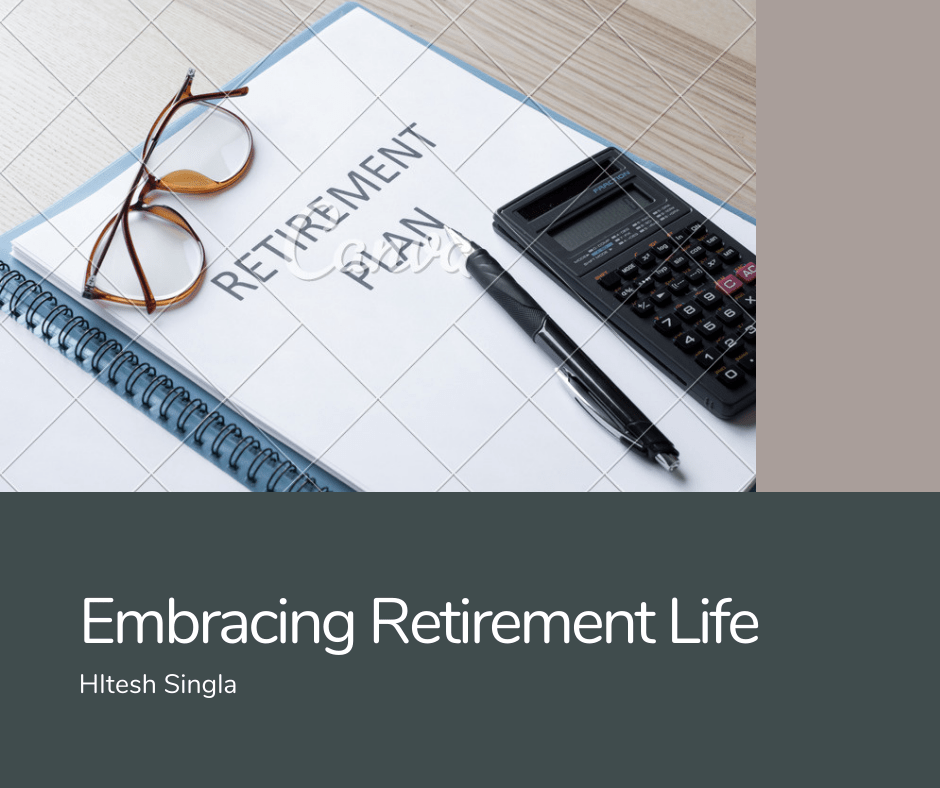The allure of early retirement has captured the imagination of many, fueled by stories of financial independence and the freedom to pursue passions. However, the pursuit of quick returns and short-term gains often overshadows the importance of long-term financial planning. In this article, we’ll delve into the misconceptions surrounding early retirement and highlight the critical factors to consider for a secure and fulfilling financial future. The Changing Landscape of Retirement Gone are the days when people settled into their careers at a young age and worked until retirement. Today, the desire for early retirement has become increasingly prevalent, driven by factors such as increased life expectancy, technological advancements, and a desire for greater flexibility. However, this shift in mindset has also led to a focus on short-term gains and a neglect of long-term financial planning. These mind shifts have been furthered by Influence of Media and Social Media: The constant bombardment of investment news and success stories can create unrealistic expectations. People may believe that it’s easy to make quick money through investing, leading them to take unnecessary risks. Lack of Financial Knowledge: A lack of understanding about financial concepts, investment strategies, and risk management can lead to poor decision-making. People may be swayed by advertisements or tips from friends without conducting proper research. Overconfidence: Overconfidence in one’s ability to make sound investment decisions can lead to risky behavior. People may underestimate the potential for losses and believe they can consistently outperform the market. The Pitfalls of Short-Term Thinking While the pursuit of high returns can be tempting, it’s essential to consider the long-term implications. Chasing after quick profits without a solid financial plan can lead to several pitfalls: Increased Risk: The search for higher returns often involves taking on more risk, which can result in significant losses if the market turns sour. Lack of Diversification: A focus on short-term gains may lead to a lack of diversification, exposing investments to unnecessary risks. Emotional Decision-Making: The pursuit of quick profits can cloud judgment and lead to emotional decision-making, which can be detrimental to long-term financial success. The Importance of Long-Term Financial Planning To achieve a secure and fulfilling retirement, it’s crucial to adopt a long-term perspective. Here are some key factors to consider: Starting Early: The earlier you start saving for retirement, the more time your investments have to grow. Even small contributions can make a significant difference over the long term. Realistic Expectations: Set realistic expectations for your retirement income and lifestyle. Avoid making assumptions based on short-term market trends. Risk Tolerance: Assess your risk tolerance and align your investment strategy accordingly. A balanced approach that considers both growth and preservation of capital is often recommended. Diversification: Spread your investments across different asset classes to reduce risk and improve returns over time. Professional Advice: Consider seeking advice from a qualified financial advisor to help you create a personalized retirement plan. Case Study: The Impact of Early Retirement To illustrate the importance of long-term planning, let’s consider two individuals: Person A: Earlier a person used to settle around when he was 22- 23 years of age and work till his retirement at age 58. He had a total of 36 years to grow that wealth. He would eat from that corpus for the next 23 years. Lets understand this : Current age : 24 Retirement age : 58 Life expectancy : 80 Inflation: 6% Growth rate of corpus : 12% Current Monthly Expenditure : Rs 1,00,000/- Corpus Required : ₹109,857,502.92 Monthly Investment : ₹21,917.20 Person B: Starts earning at the age of 26-27. Now they want to retire early by the age of 50. So the growth period for this corpus is for 24 years,But life expectancy has increased to 85. He would eat into this corpus for 35 years. Lets understand this : Current age : 26 Retirement age : 50 Life expectancy : 85 Inflation: 6% Growth rate of corpus : 12% Current Monthly Expenditure : Rs 1,00,000/- Corpus Required : ₹74,292,841.37 Monthly Investment : ₹50,976.61 Despite similar incomes, Person A is likely to have a significantly larger retirement corpus due to the power of compound interest and a disciplined approach to saving. Also even though the requirement corpus required is high person A is able to achieve the same with low investment amount. Conclusion While the allure of early retirement may be strong, it’s essential to approach it with a long-term perspective. By understanding the pitfalls of short-term thinking and adopting a disciplined approach to financial planning, you can increase your chances of achieving a secure and fulfilling retirement. Remember, the journey to financial independence is a marathon, not a sprint. Reach us to help you planning for your retirement you can reach us : https://wa.me/message/LC5W5ZNTPSJ5L1)
Preparing for Retirement: Don’t Delay, Plan Today! If we ask people if they have planned for retirement? They will say yes, they already are saving for retirement. On further inquiry, do they know the amount they would require at retirement? Few had even put a thought to it. Even further, those who had put thought are either just saving through the traditional way or, even if they are using multiple channels, they have yet to plan any asset allocation. Why do we need retirement planning? While interacting with many HNI’s Salaried or Businessmen in the NCR region, I wondered why we need to plan when we already have many assets. They were blank when we discussed how much you think is required at retirement. The pace of life has increased, and most of us don’t even have time to ponder things that should matter to us financially. We are occupied with earning. We need to plan. The primary asset allocation structure. Which would help you to build your plan. The life expectancy in our country has increased to 70.8 currently. If we say a person retires, At, say, 58, he has to take care of his expenses for at least 12 years. During this time, he had no pension support in the developed world. Also, the inflation would eat into most of the savings he has made so far. The person’s expenses at that stage are kept as he has a living standard to maintain. Medical expenses must be taken care of, and Indian tradition wants the elders to give to their children at this age. So you are not earning but only have expenses to take care of for at least a further 12 years. With the nuclear family system, parents, after retiring, do not receive support from their children. The inflation-adjusted cost of everything would be very high. So, there is a need to have a retirement corpus in place, and it can be achieved through asset allocation. Missing Social Security In India: As the rest of the Western world or the more developed world has systems to care for its aging population, India still needs a strategy. A person must depend on retirement investments to create a corpus. Another challenge people say is they are already spending so much that they need more money to spare for the future. People take such a myopic view of life that they start to think and plan when the future is very near, which would have been done years ago. They do not because of sheer laziness or lack of trust in the end. How to plan for retirement? Once we understand the reason to plan retirement, we need to consider the factors to make a plan for the best possible pension we can give to ourselves. You worked hard all through life, and now you need to enjoy your golden years. Emergency planning: Any plan has to have emergency planning in case you lose your job or your business has a downturn. It would help if you were prepared with the amount required for at least one year of household expenditure. Insurance: Take sufficient cover to protect yourself from the unplanned incidences of life. Health and term should cover you and your spouse to help you with lifelong processes. Budget: So, how to budget is the big question you need to answer. So, the first step is to take your current monthly expenditure. This is the lifestyle expenditure. Add the cost of trips or any other activity you do to this. Take the number of years of retirement. Check the price of inflation as of today. Check the life expectancy the number of years you could be alive. Now, you have to consider the pre-retirement and post-retirement rates of interest. This would give a rough amount you would need after retirement. Asset allocation: Another important concept is asset allocation, which would help you to achieve your goals according to your risk. I have already discussed the same great length in my other post. (https://wealthinn.in/annuity-plan-retirement-planning/) Review and rebalancing: Review your portfolio and rebalance as and when required. This fundamental step should always be noticed. Estate Planning Consider creating a will, trust, or estate plan to ensure your assets are distributed according to your wishes. An estate plan can also help reduce estate taxes and simplify the transfer of assets to your heirs. What instruments are available FD: The most commonly used and relied-on instruments for planning. Which most people say is the best suited for them. But it should not be considered an investment option but a saving option. There are two cases where this would be used Emergency fund parking After retirement, some amount of money should go into it. PPF/ELSS: Another fundamental instrument that can be used if you are very risk averse is PPF, and if you can take risks is ELSS for long-term planning. PPF would give tax-free returns and per-defined interest rates provided by the government. ELSS would be taxable at redemption, but you can earn higher equity-related returns. You can balance out both PPF and ELSS as investment options. NPS: Another great government instrument is to invest in NPS. It helps you to create a corpus for a pension when you retire. The only mechanism which the government planned for retirement benefits in our country. EPF: if you are salaried, you can use this instrument to create a corpus. But now, the government has made a limit beyond which you would not get taxation benefits. Equity/MF/PMS- Equity or equity-linked instruments are one the best agents that help in long-term planning like retirement. You can invest via SIP or LumpSum. Also, you can use debt to balance the portfolio in market distress. Equity-linked instruments have been giving returns upward of 12 %, which other traditional devices are not. This helps you increase the risk and reward for your portfolio. Annuity: An annuity is another important instrument to use for your retirement planning. The annuities are simple instruments that give you a


